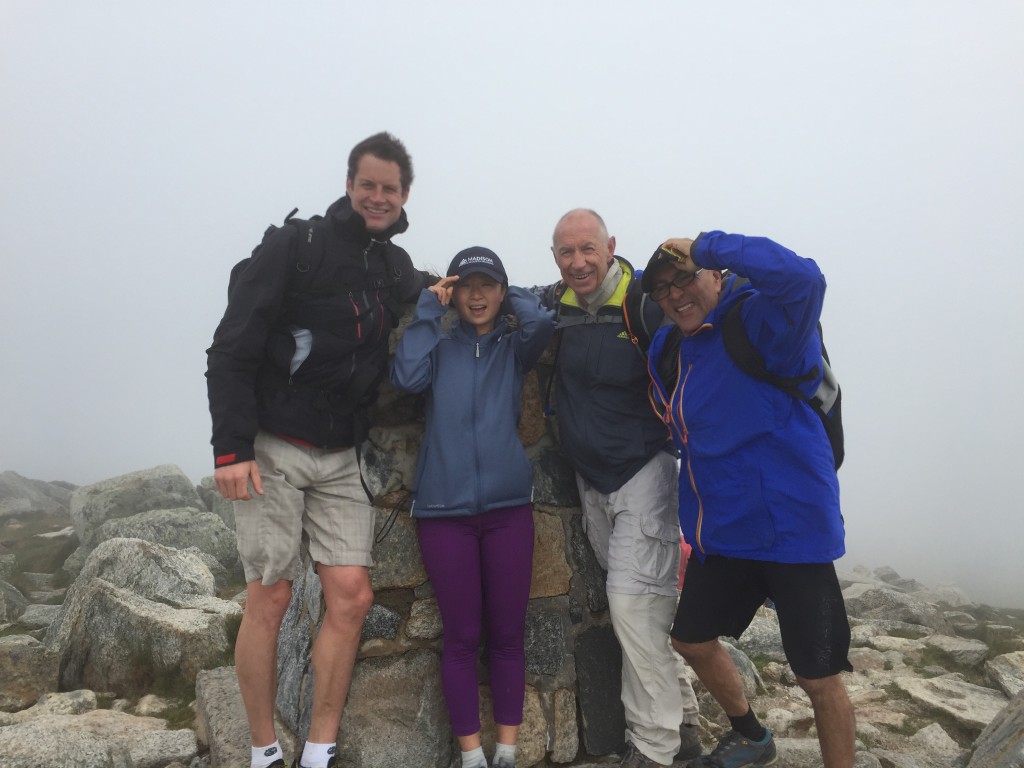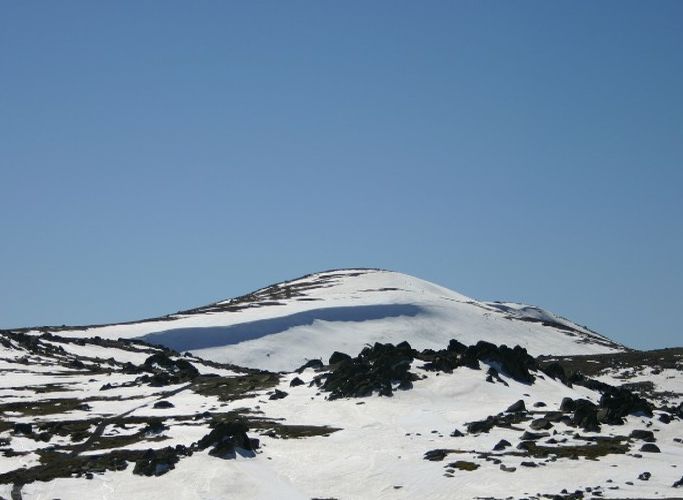
Today we successfully completed the “Main Range Walk” to the summit of Koscuiszko. We began our ascent at 9:30 AM in sunny conditions from Charlotte Pass, hiking some of the greatest alpine country in New South Wales, passing through grasslands along ridges with views of lakes and forest below until reaching the summit, where we encountered 100 km/h winds! On our descent a hailstorm moved in and we scurried down the remainder of the hike crossing the Snowy River and returned to the trailhead. We completed the 22 km loop (920m vertical climb) in about 4.5 hours, half the time suggested by the Koscuiszko park staff. It was a pleasant outing, and now we are back in the town of Jindabyne enjoying a well-deserved hot meal and glass of wine! Tomorrow we head back to Melbourne and then depart for home. It’s been a fun adventure ‘down under’ to the highest point on Australia!

The Madison Mountaineering team has arrived in Melbourne to climb/hike the highest point on Oceania and one of the “original” Seven Summits. Kosciuszko (2228m / 7,310ft.) located in the Snowy Mountains of New South Wales is the highest point on the Australian continent. Climbers aspiring to reach the highest point on all 7 continents that comprise Earth’s surface usually make the trip “down under” in the summer months, December – February. Kosciuszko is rarely “guided” as logistically it’s pretty easy to make your way to the base of the mountain and, weather permitting, the journey to the summit is usually straightforward, although a few friends have reported white-out conditions and difficulty navigating during a storm. The ascent begins near the village of Jindabyne, and offers 3 different route options. We are planning to take the more challenging route up and one of the easier routes back down.
When American Dick Bass became the first person to reach the highest point on each of the 7 continents in 1985, Kosciuszko was a much smaller and easier objective by comparison to the others:
- Asia: Everest, 8,848m / 29,035ft.
- Africa: Kilimanjaro, 5,895m / 19,341ft.
- Europe: Mount Elbrus, 5,642m / 18,510ft.
- North America: Denali, 6,168m / 20,320ft.
- South America: Aconcagua, 6,961m / 22,837ft.
- Antarctica: Vinson Massif, 4,892m / 16,050ft.
And then there is the Carstensz / Kosciusko debate:
Another climber, who was also hoping to become the first person to climb the highest point on each of the 7 continents, and was in competition with Dick Bass, decided that Kosciuszko was not worthy of the challenge, given that the other summits are much more formidable objectives. Also, when considering all of Oceania as a continent, Kosciuszko is overshadowed by the peak Puncak Jaya (also known as Carstensz Pyramid) located in Indonesia. This climber, Reinhold Messner, has become one of the world’s best known climbers through his bold conquests: the first solo ascent of Everest, the first climb of Everest without the use of supplemental oxygen, the first climber to summit all 14 of the world’s 8000 meter peaks, and many other feats. Messner decided that nearby Carstensz Pyramid, should be considered the real climbing objective because it was much more difficult, both to access and to climb. Climbers in pursuit of the Seven Summits today usually attempt to summit both Kosciuszko and Carstensz Pyramid to cover all bases.
Start your own Seven Summits quest! Madison Mountaineering is currently offering guided climbs of Everest, Kilimanjaro, Mount Elbrus, Aconcagua, and Vinson Massif.
You can read more about the Seven Summits here: http://en.wikipedia.org/wiki/Seven_Summits
Since the April 18th, 2014 tragedy that killed 16 Nepali mountain workers, many people have asked me if I plan to return to Everest. My answer is ‘yes absolutely’, as our team for the 2015 spring season on the Nepal side of Everest is nearly complete at this time. I enjoy the challenge and experience of climbing the mountain, and leading other climbers to the top. I realize this is dangerous, but I believe that this risk can be managed to an acceptable degree. In analyzing the accident on April 18th, 2014, and the subsequent shutdown of the climbing season I have a few thoughts:
- Within hours of the icefall accident the climbing route was moved approximately 100 meters to the center of the icefall, thus avoiding blocks of ice that might fall down from the west shoulder. This was an easy task and should have been done days earlier. There was also a broken ladder that climbers had to use to cross a wide crevasse, and this was very cumbersome. The ladder should have been replaced so that climbers could easily pass through this area. However, this was causing congestion and a crowd of mostly Sherpa climbers were trapped in an exposed area when the ice broke. Next season on Everest (spring 2015) I believe teams will be proactive in maintaining this portion of the climbing route, rather than relying on the SPCC. If climbers cannot easily pass through under the west shoulder I believe they will turn back rather than spend time exposed to this objective hazard. The group hired by the government of Nepal (SPCC Icefall doctors) is supposed to maintain this route. Climbers pay an additional fee on top of the climbing permit for this. In the future our team and others will work with the SPCC to make sure we agree the route is placed correctly, as well in maintaining it as necessary.
- As far as the political and labor situation on Everest is concerned, I believe it will be fine in 2015. I have spoken with many Sherpas since the accident and all of them want to return to climb and support foreign climbers on the peak, time has a way of healing us and rekindling our desires. Many climbers have lost confidence in Nepal, and will go to the North (Tibetan/Chinese) side to climb. Others who prefer to climb on the Nepalese (South) side will wait at least one year to see how things play out. There was a drop in the number of trekkers this autumn season, and the locals are worried this will continue into the next year as a worldwide perception that “Everest is closed” persists. I believe there will be a decrease in the number of climbers in 2015, and ultimately this will affect the families of the Khumbu. Less expeditions means less Sherpas are needed. Generally, a Sherpa usually makes 10 times the average income of a Nepalese person by working 2 months on Everest. This money is used to support his family. Without foreign climbers to support on the mountain, the alternative sources of income for these Sherpa who rely on expedition work is scarce. My personal opinion is that we will return to climb in 2015 and have great success as we have had in the past.
